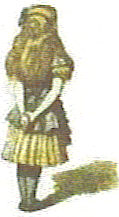3) It is claimed that cosmic rays can energy exceeding that of colliders, and they have not caused trouble, suggesting that colliders will not cause trouble either. However, the analogy is not precise. It assumes two things that may not be true. First, cosmic ray center of mass energy exceeding that of colliders has never been measured directly. Measurements that seem to show this are based on showers of secondary particles. Second, the product of a collision between a cosmic ray and an earth particle will always be moving at an appreciable fraction of the speed of light. If it has a small capture radius, it will always pass right through earth like a neutrino. The product of a collider collision can (sometimes) be moving at less than escape velocity from earth. If so, it will fall into earth where it will have forever to accrete other matter. Some calculations show rapid accretion.See: Risk Evaluation Forum
Using this above as one basis of the argument, it was by these assumptions that I too was convinced things would be okay. There are a lot of things that go with this statement that currently is not expressed given current information in regards to Pierre Auger experiments. That when clearly seen in the light of current research into LHC, does not allow one to take in all that they should be.
Contact
Go back to John Ellis and current research if you must, and thinking in terms of the cosmos. It's infancy, and one does not disregard the "origins and beginnings" of this universe. Are there reasons that are less then desired that would govern any legal defence team based on some "religious affiliation" and driven from this religious context? I hope not.

We would not want some Woitian backlash, as done with string theory, from a intelligent design standpoint, as a recognized motived factor in that legal defense. It is far beyond me that I ask these associative questions, yet, these images come to mind when ever the establishment hosting the world's collective scientists, is confronted by the very issues that seem evasive in regards to safety?
Energies Used in Particle Creation

It would behove any person to take the time to travel to the links I am supplying, to help you absorb as much information as possible.With the full intention that what I am describing does have a distillation process that will become very simple in qualitative design.

Finding the energy range with which we are dealing within our colliders, has awakened the realization of the complexity dimensional attributes would have considering E8.
"I’m a Platonist — a follower of Plato — who believes that one didn’t invent these sorts of things, that one discovers them. In a sense, all these mathematical facts are right there waiting to be discovered."Donald (H. S. M.) Coxeter
The complexity of the blackhole would have allowed the possibilities of describing the source of "all dimensional attributes" knowing that the collapse of the blackhole would bring temperatures to the point of the quark Gluon plasma. What would be happening to allow such complexity?
This basis of thought on my part is, "the equivalence determined" and thought about in terms of Lagrangian considerations. This another topic. But does deal with the understanding of the potential microscopic blackholes that could be produced, determined by the energy levels
Thus RHIC is in a certain sense a string theory testing machine, analyzing the formation and decay of dual black holes, and giving information about the black hole interior.
See:Are Strangelets Natural?
LHC Safety?
I am writing this blog entry because of Walter's comments on the side.
It is very hard for me knowing that there is a train of thought developed through my research. This question of cascading showers, were with the understanding of "energy events" that allowed us to see a "greater plethora of mapping" that would direct us to the very essence of symmetry breaking, based on experimental processes herein this blog described.
"String theory and other possibilities can distort the relative numbers of 'down' and 'up' neutrinos," said Jonathan Feng, associate professor in the Department of Physics and Astronomy at UC Irvine. "For example, extra dimensions may cause neutrinos to create microscopic black holes, which instantly evaporate and create spectacular showers of particles in the Earth's atmosphere and in the Antarctic ice cap. This increases the number of 'down' neutrinos detected. At the same time, the creation of black holes causes 'up' neutrinos to be caught in the Earth's crust, reducing the number of 'up' neutrinos. The relative 'up' and 'down' rates provide evidence for distortions in neutrino properties that are predicted by new theories."
See: How Particles Came to Be
In doing my own research, I tried to follow the thinking of the literature presented on the topic of microscopic blackholes. Now there was to my understanding a theoretical position assumed, from what we understood when dealing with the topic, and the understanding of what Cern was to produce.
Now to me the basis of settling the questions of safety, were answered by association of "what was natural" within the domains of these cascading particle showers in terms of these cosmic rays.
If we were after the origins and beginnings to our universe, we were in essence, describing and mapping the beginning times of these particle showers. Also, the dimensional attributes of the interior of the blackhole.


